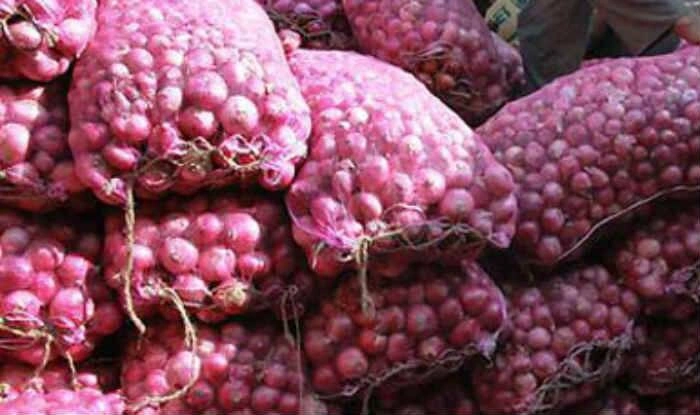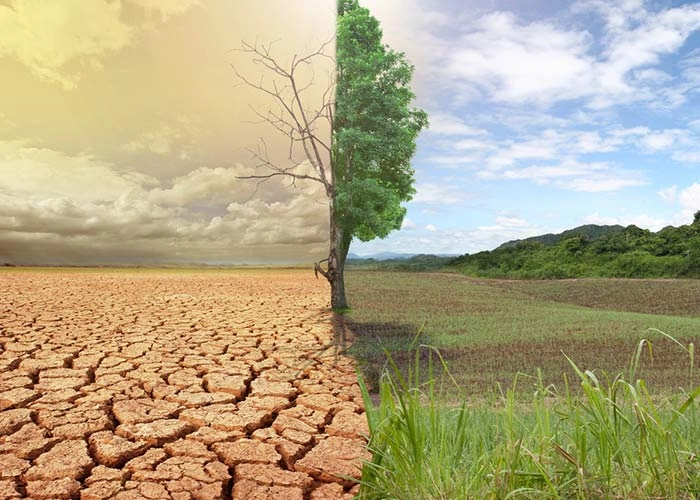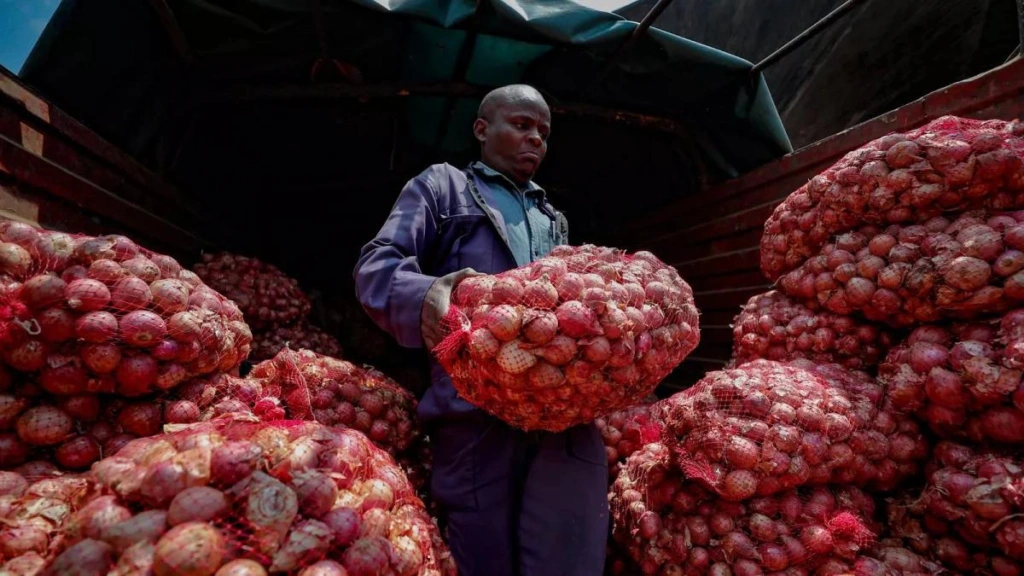Nashik Onion Export from India : Horizonexim

Nashik: The Onion Capital of India Nashik, often dubbed the “Onion Capital of India,” is renowned for its extensive onionproduction, contributing significantly to domestic consumption and exports. This region’s uniqueclimatic conditions, fertile soil, and advanced farming techniques make it an ideal location forgrowing high-quality onions. But what exactly makes Nashik onions so special? Let’s dive into thekey highlights. Why Nashik is Famous for Onions Interesting Facts About Nashik Onions Export Popularity: Nashik onions are a major export commodity, with significant demandin countries like Bangladesh, Sri Lanka, Malaysia, and various Middle Eastern nations. Theconsistent quality of Nashik onions makes them a preferred choice for importers.Long Shelf Life: One of the standout features of Nashik onions is their long shelf life. Thismakes them ideal for export, as they can withstand long shipping times without spoiling,ensuring they reach international markets in good condition. Geographical Indication (GI) Tag: The Nashik onion has been awarded the GeographicalIndication (GI) tag, recognizing its unique characteristics linked to the region’s geography.This tag not only protects the product’s identity but also boosts its marketability on theglobal stage. The Onion Market in Nashik The onion market in Nashik is one of the largest and most vibrant in India. The Lasalgaonmarket, located in Nashik, holds the distinction of being Asia’s largest onion market. Here’s whatyou should know: Onion Export from India: Nashik’s Contribution India is one of the largest onion exporters in the world, and Nashik plays a pivotal role in this.The region’s onions are highly valued in international markets for their quality and taste.However, the export scenario is not without its challenges: Largest Onion Market in Nashik: Lasalgaon Lasalgaon, a small town in Nashik, is home to Asia’s largest onion market. Here’s why it’ssignificant: Customer FAQs Q: What makes Nashik onions different from other onions?A: Nashik onions are known for their pungency, uniform size, and long shelf life. The uniqueclimatic conditions and fertile soil of Nashik contribute to these qualities. Q: Can Nashik onions be stored for a long time?A: Yes, one of the key features of Nashik onions is their long shelf life, making them suitable forextended storage and ideal for export. Q: Why are Nashik onions in high demand internationally?A: The consistent quality, flavor, and durability of Nashik onions make them a favorite ininternational markets, especially in Asia and the Middle East. Q: How does the Lasalgaon market influence onion prices in India?A: Lasalgaon, being the largest onion market in Asia, plays a crucial role in setting the benchmarkprices for onions in India. Prices determined here often influence prices across the country. Q: Are there any export restrictions on Nashik onions?A: Yes, the Indian government occasionally imposes export restrictions or sets a minimumexport price to stabilize domestic prices, which can affect the export of Nashik onions.
The Impact of Sustainability and ClimateChange on Agricultural Exports

Introduction As the world grapples with climate change, the agricultural sector is increasingly at theforefront of discussions about sustainability. This is particularly true in the context of globaltrade, where the demand for sustainably produced goods is growing. This trend is reshapingthe agricultural export landscape, with both challenges and opportunities for farmers and exporters. The Growing Importance of Sustainability Sustainability in agriculture encompasses a wide range of practices aimed at reducingenvironmental impact, conserving natural resources, and enhancing the resilience of farmingsystems. These practices include: Soil health improvement through reduced tillage, cover cropping, and organic farming.Water conservation techniques such as drip irrigation and rainwater harvesting.Reduction of chemical inputs, focusing on the use of natural fertilizers and pest controlmethods.Energy efficiency and the adoption of renewable energy sources on farms. Countries importing agricultural products are increasingly prioritizing these sustainablepractices. For example, the European Union has stringent regulations on the environmental standards of imported goods, pushing exporters to comply or risk losing market access. Climate Change and Its Impact on Agricultural Exports Climate change poses a significant risk to agricultural productivity and, consequently, toexports. Extreme weather events such as droughts, floods, and heatwaves can drasticallyreduce crop yields. This not only affects the quantity of products available for export but alsotheir quality, which can lead to market rejection or lower prices. Moreover, climate change is leading to shifts in the regions where certain crops can be grown.For instance, rising temperatures are pushing the cultivation of some crops northward,altering traditional agricultural zones and forcing exporters to adapt their strategies. The Role of Technology in Addressing These Challenges Advancements in technology are playing a crucial role in helping farmers adapt to climatechange and meet sustainability goals. Precision agriculture, which uses data and AI tooptimize farming practices, is reducing waste and improving resource use efficiency. Forexample, sensors and drones can monitor crop health in real-time, allowing for preciseapplication of water, fertilizers, and pesticides (Agriculture Dive). Additionally, blockchain technology is being used to enhance transparency and traceability inthe supply chain. This not only helps in verifying sustainable practices but also in gainingconsumer trust, which is becoming increasingly important in global markets. Global Trends and Consumer Demand There is a growing consumer demand for sustainably produced goods, particularly indeveloped markets like Europe and North America. This demand is influencing retailers andfood companies to source products that are certified organic, fair trade, or have othersustainability labels. As a result, agricultural exporters are increasingly required to provideproof of sustainable practices to maintain their market share. Governments and international organizations are also stepping up efforts to promotesustainability in agriculture. Initiatives such as the European Green Deal and the UnitedNations’ Sustainable Development Goals (SDGs) are setting ambitious targets that are likelyto influence agricultural policies and trade in the coming years. If you are interested in our product export visit: onion exporters from india Conclusion Sustainability and climate impact are becoming central to the future of agricultural exports.Farmers and exporters who embrace sustainable practices and adapt to the challenges posedby climate change are likely to find themselves at an advantage in the global market.Conversely, those who fail to do so may struggle to compete as regulations tighten andconsumer preferences evolve, By investing in sustainable practices and technologies, agricultural exporters can not onlymitigate the risks posed by climate change but also seize new opportunities in a market thatincreasingly values sustainability.
The Impact of Climate Change on Onion Production

Introduction Climate change is increasingly affecting global agriculture, with onion production being noexception. As a staple in many cuisines worldwide, onions are crucial for both economic andnutritional reasons. Understanding how climate change impacts onion farming is essential fordeveloping strategies to ensure future production stability. 1. Overview of Onion Production 2. Effects of Climate Change on Onion Growth 3. Adaptation Strategies 4. Case Studies 5. Future Outlook Conclusion The impact of climate change on onion production is multifaceted, affecting growth conditions,yield, and quality. By adopting adaptive strategies and supporting research and innovation, theonion industry can better navigate the challenges posed by a changing climate and ensuresustainable production for the future. Call to Action Encourage readers to stay informed about climate change and its effects on agriculture, supportsustainable practices, and advocate for policies that address the challenges faced by farmers.
Digitalization and Technology in Onion Farming: A New Era of Efficiency andInnovation.

Introduction Onion farming has traditionally been a labor-intensive process, but the advent ofdigitalization and technology is transforming the industry. From precision agriculture to dataanalytics, modern technology is enhancing productivity, reducing waste, and improvingquality. 1. Precision Agriculture 2. IoT (Internet of Things) in Farming 3. Data Analytics 4. Automation and Robotics 5. Supply Chain and Market Access 6. Challenges and Future Trends Conclusion Digitalization and technology are revolutionizing onion farming, making it more efficient,sustainable, and profitable. As technology continues to evolve, it will be crucial for farmers tostay informed and adaptable to harness the full potential of these innovations. Call to Action Stay tuned for more updates on technology in agriculture and share your thoughts orexperiences with digital farming tools in the comments below!